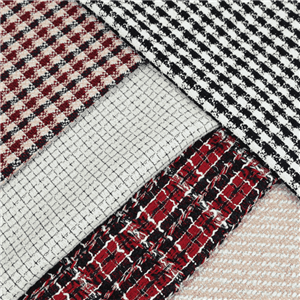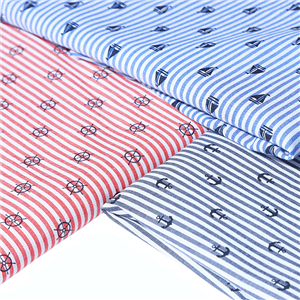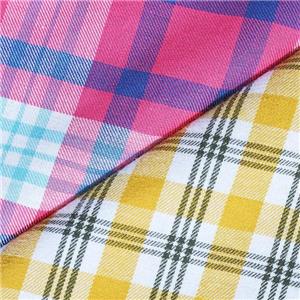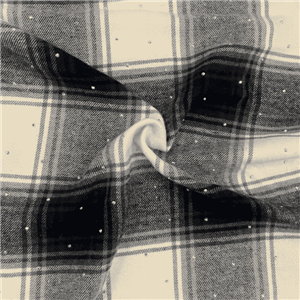What Is Stripe Fabric
What Is Stripe Fabric?
Stripe fabric is a timeless textile design defined by linear patterns that run vertically, horizontally, diagonally, or even in curved formations. Though often mistaken for a fabric type, stripe fabric refers to the visual pattern, not the material composition. It can be woven from cotton, polyester, velvet, silk, or blends and is used across fashion, home décor, and accessories. This guide explores different types of stripe fabric, their unique characteristics, applications, and materials used. We’ll also cover how to choose the right stripe fabric based on use case and provide answers to the most commonly asked questions by designers and bulk buyers.
Common Types of Stripe Fabrics
Stripe fabric comes in many forms, and the differences often lie in color contrast, stripe width, repetition, and textile base. Here are the most popular types:
Classic Stripes
Classic stripes feature evenly spaced, equal-width lines, usually in two contrasting colors. These are some of the most recognizable stripe patterns used in cotton stripe fabric for shirts, curtains, or summer dresses. They're easy to style, offer clean symmetry, and can suit both casual and formal contexts.
Pinstripes
Pinstripes are ultra-thin, closely spaced vertical stripes, typically seen in suits and formal wear. Their refined appearance makes them ideal for business attire. Often used in wool or polyester blends, pinstripes add a touch of class while subtly elongating the form, making them especially flattering.
Ticking Stripes
Ticking stripe fabric has a rich history, originally used in mattress covers. It usually features medium-width navy or black stripes on a white or beige background. These fabrics are often found in vintage-inspired home décor. Today, ticking stripes are popular in rustic or cottage-core aesthetics and frequently appear in upholstery, pillows, or drapes.
Bengal Stripes
Bengal stripes are wider than pinstripes and alternate between bold color bands. Traditionally used in men’s dress shirts, Bengal stripes offer more visual punch while retaining elegance. Compared to ticking stripes, they’re more vibrant and often used in blue green stripe fabric applications for a fresh, modern look.
Shadow Stripes
Shadow stripes are subtle, tone-on-tone patterns with slight variations in sheen or texture rather than color. They’re elegant, understated, and favored in fine suiting or dress fabrics. Often seen in silk or velvet stripe fabric, they offer sophistication without overwhelming the garment.
Multi-Stripe & Candy Stripes
Multi-stripe fabrics combine different colors and widths to create a playful, energetic look. Candy stripes typically feature pastel colors on a white background, often used in children’s clothing or summer textiles. These stripes add vibrancy to home décor and fashion items alike.

What Materials Are Used for Stripe Fabric?
Stripe fabric can be made from a wide range of textiles. Below is a table showing common materials and their properties:
| Material Type | Characteristics | Common Uses |
|---|---|---|
| Cotton Stripe Fabric | Breathable, soft, natural | Shirts, dresses, bed linens, curtains |
| Polyester | Durable, wrinkle-resistant | Blended apparel, bags, home décor |
| Velvet Stripe Fabric | Luxurious texture, deep sheen | Drapes, upholstery, fashion accessories |
| Silk | Smooth, lustrous, lightweight | Scarves, luxury wear, formal attire |
| Linen | Light, breathable, textured | Summer wear, tablecloths, curtains |
| Blended Fabrics | Combined strength, flexibility | Versatile use across industries |
Notably, black velvet stripe fabric offers high contrast and luxurious appeal, commonly used in upscale apparel or accent furniture. Similarly, blue green stripe fabric blends cool tones to create tranquil yet vivid interiors or beachwear collections.
Where and How Is Stripe Fabric Used?
Fashion & Apparel
In the fashion world, stripe fabric is a staple in everything from casual wear to haute couture. Here's how it's applied:
Vertical stripes elongate the body, making the wearer appear taller and slimmer.
Horizontal stripes can broaden the look, ideal for petite frames or relaxed clothing.
Common garments include:
Button-down shirts
Dresses
Trousers
Blazers and suits
Loungewear and pajamas
Pinstripes and bengal stripes dominate formal menswear, while multi-stripe and candy stripe fabrics rule spring/summer collections.
Home Textiles & Interior Décor
Interior designers frequently use ticking stripe fabric for its rustic charm. Popular uses include:
Curtains & Drapes: Vertical stripes make rooms feel taller.
Sofas & Armchairs: Adds character while hiding wear.
Table Runners & Bed Linens: Especially in cotton stripe fabric for breathability and softness.
Accent Pieces: Throw pillows, poufs, and quilts often feature blue green stripe fabric or subtle shadow stripes for modern styling.
Accessories & Bags
Stripe fabric also finds popularity in fashion accessories and soft goods such as:
Scarves (often in silk or linen)
Beach bags and totes
Upholstered luggage
Velvet stripe fabric handbags or headbands
Its pattern offers versatility across seasons and styles.
How to Choose the Right Stripe Fabric
When selecting stripe fabric, consider the following:
1. End Use
| Use Case | Suggested Fabric | Stripe Type |
|---|---|---|
| Business Wear | Polyester, wool blends | Pinstripe, shadow stripe |
| Casual Shirts | Cotton stripe fabric | Classic, bengal, candy stripes |
| Curtains | Cotton, linen | Ticking, shadow stripe |
| Upholstery | Velvet stripe fabric | Classic, multi-stripe |
| Children’s Wear | Cotton, blends | Candy stripe, multi-stripe |
2. Printed vs. Yarn-Dyed
Printed stripe fabric: Cheaper, better for trend-driven collections.
Yarn-dyed stripe fabric: Higher quality, colors last longer, better texture.
3. Stripe Direction & Size
Vertical stripes for elongation.
Horizontal stripes for a cozy or wider effect.
Narrow stripes = subtle, formal.
Wide stripes = bold, casual or artistic.
Visual Effects of Stripe Fabric
Stripe patterns offer strong visual cues. Here’s how different stripe orientations and widths impact perception:
| Stripe Type | Visual Effect | Common Use |
|---|---|---|
| Vertical stripes | Elongate body or wall height | Clothing, curtains |
| Horizontal stripes | Make space or person appear broader | Sofas, dresses |
| Wide stripes | Eye-catching, bold | Fashion statement pieces |
| Narrow stripes | Understated elegance | Formalwear, pinstriped suits |
| Diagonal/Curved | Adds motion and complexity | Designer textiles, accessories |
Especially in interior design, black velvet stripe fabric can create dramatic effects by using light reflection, while blue green stripe fabric evokes calmness and freshness in modern spaces.
FAQs About Stripe Fabric
What is the difference between ticking stripe and Bengal stripe?
Ticking stripes are medium-width, utilitarian, often used in upholstery and vintage décor. Bengal stripes are wider, high-contrast, and used in shirts and formal wear.
Can stripe fabric be made of polyester?
Yes, polyester stripe fabric is durable and wrinkle-resistant. It's commonly used in budget-friendly garments and bags.
Is stripe fabric in style now?
Absolutely. In 2025, stripe fabric continues to trend across fashion runways and home décor magazines, especially velvet stripe fabric in luxury lines.
What patterns go well with stripe fabric?
Stripes pair well with solids, florals (for contrast), polka dots (for playfulness), or even other stripe types when layered tastefully.
How to care for stripe fabric?
For cotton: Machine wash cold, tumble dry low.
For velvet: Spot clean or dry clean only.
For blended fabrics: Follow care label—many are machine-friendly but may need ironing.
Final Thoughts: Why Stripe Fabric Remains Timeless
From its historical roots to modern applications, stripe fabric remains a staple in both design and industry. Its adaptability, from the subtlety of shadow stripes to the bold impact of black velvet stripe fabric, allows it to transcend seasons, trends, and cultures. Whether you're sourcing cotton stripe fabric for apparel, blue green stripe fabric for interior design, or velvet stripe fabric for luxury goods, stripes offer a unique combination of functionality and visual appeal.
For bulk sourcing of high-quality stripe fabrics, Honry Fabric offers a wide variety of types of stripe fabric tailored for B2B needs. From yarn-dyed cotton to eco-friendly polyester blends, our vertically integrated production system ensures quality, consistency, and timely delivery.
**Explore our collection today at https://www.honryfabric.com/ and discover why leading global brands trust Honry Fabric for their textile solutions.




